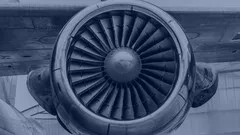
Aerospace Engineering: Aircraft Systems and Avionics 
Discover the fascinating world of Aerospace Engineering with the Aircraft Systems and Avionics Course. Delve into the intricate engineering behind the systems onboard airplanes and aircraft. From flight instruments to electrical, pneumatic, and hydraulic systems, explore the essential components that keep aircraft operating smoothly. Gain a comprehensive understanding of why specific systems are crucial for normal flight conditions and how they are interconnected. This course is perfect for those who have a passion for aviation and want to deepen their knowledge. Don't miss out on this incredible opportunity to embark on a journey into Aerospace Engineering. Enroll now and expand your horizons! ▼
ADVERTISEMENT
Course Feature
![]() Cost:
Cost:
Paid
![]() Provider:
Provider:
Udemy
![]() Certificate:
Certificate:
Paid Certification
![]() Language:
Language:
English
![]() Start Date:
Start Date:
2021-03-26
Course Overview
❗The content presented here is sourced directly from Udemy platform. For comprehensive course details, including enrollment information, simply click on the 'Go to class' link on our website.
Updated in [September 05th, 2023]
In the "Aerospace Engineering: Aircraft Systems and Avionics" course, students will acquire a wide range of skills and knowledge encompassing the engineering of various systems found on airplanes and aircraft. The course description outlines the key areas of study:
1. Introduction: The course begins with an introduction to the fundamental concepts of aircraft systems engineering, setting the stage for a comprehensive understanding of the subject matter.
2. Flight Instruments: Students will delve into the world of flight instruments used on civil aircraft, gaining insights into their functionality and role in ensuring safe and efficient flight operations.
3. Electrical System: This segment explores the electrical systems on aircraft, including the generators responsible for producing electricity onboard. Students will learn how these systems power essential components of the aircraft.
4. Pneumatic System: The course covers pneumatic systems, highlighting their significance in aircraft operations and distinguishing them from other types of systems.
5. Hydraulic System: Students will gain an understanding of hydraulic systems and their critical role in controlling aircraft movements, particularly in relation to the landing gear and control surfaces.
6. Avionics: This section focuses on avionics, offering insights into the advanced electronic systems that enhance aircraft functionality and safety.
7. Cockpit: The course concludes with an exploration of the aircraft cockpit, providing an in-depth look at the main instruments and their connection to flight conditions.
The "Aerospace Engineering: Aircraft Systems and Avionics" course contributes significantly to professional growth by equipping students with a specialized skill set crucial to the aerospace industry. Graduates of this course will be well-prepared to work in roles related to aircraft systems engineering, avionics, and maintenance, enhancing their career prospects and opening doors to opportunities in the aviation sector.
For those considering further education, this course serves as an excellent foundation. The knowledge and skills acquired in aircraft systems and avionics provide a strong basis for pursuing advanced degrees or specialized training in aerospace engineering or related fields. It is recommended that students have previously completed the course on "Aerospace Engineering: Aircraft Fundamentals and Advanced" to ensure a clear grasp of the concepts presented in this course.
Course Syllabus
Introduction
Flight Instruments
Electrical System
Pneumatic System
Hydraulic System
Avionics
Pilot-Aircraft Interface
Course Provider

Provider Udemy's Stats at AZClass
Discussion and Reviews
0.0 (Based on 0 reviews)
Explore Similar Online Courses

Rocket Engineering and Interstellar Space Propulsion

How do Aircraft Engines Work? (FREE COURSE!)

Python for Informatics: Exploring Information

Social Network Analysis

Introduction to Systematic Review and Meta-Analysis

The Analytics Edge

DCO042 - Python For Informatics

Causal Diagrams: Draw Your Assumptions Before Your Conclusions

Whole genome sequencing of bacterial genomes - tools and applications

Aerospace Engineering: Airplanes Airlines and Airports

Interplanetary Spacecraft and Satellite Engineering


Start your review of Aerospace Engineering: Aircraft Systems and Avionics